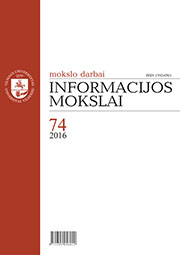Atsakomybės apskaitos sandara ir jos informacijos naudojimas
The structure of responsibility accounting and the usage of its information
Author(s): Jonas Mackevičius, Rasa Subačienė, Daiva TamulevičienėSubject(s): Business Economy / Management, Accounting - Business Administration, Marketing / Advertising
Published by: Vilniaus Universiteto Leidykla
Keywords: responsibility accounting; structure; responsibility centers; use of information;
Summary/Abstract: In the modern dynamic and competitive business environment, it is essential that the companies seeking to survive in the market and achieve good results would apply responsibility accounting. The issue of the structure of responsibility accounting and the usage of its information – one of the most important management accounting fields – is examined in the article. New definitions of responsibility accounting and responsibility centers as well as a representative scheme of the structure of responsibility accounting are given in the article. The authors have distinguished the following elements of the structure of responsibility accounting: organizational management structure analysis and reorganization; determination of responsibility accounting goals; establishment of responsibility centers; formation of responsibility center budgets and self-control of their implementation; evaluation of responsibility centers’ activity; responsibility centers’ accountability to the company's top managers. The principles of the responsibility centers’ establishment, such as decentralization, liberty, subordination, duty, responsibility, and flexibility are analyzed in the article. These criteria of the establishment of responsibility centers have been proposed: territorial, organizational, functional, monopolistic, evaluation, accounting and accountability, planning and forecasting. It has been determined by the authors that responsibility centers might be classified according to various features; however, the most important feature is the responsibility fields. Cost, revenue, profit and investment centers might be distinguished by this feature. The information collected and systematized by these features is crucial to the top managers of a company when making operational and long-term management decisions. According to the authors’ opinion, the activity of each responsibility center should be evaluated in order to determine the results achieved by the center and the efficiency of resources usage as accurately as possible. For this, both financial and non-financial indicators must be used. The information of cost, revenue, profit and investment centers may be used for finding the solution to various problems. Mostly it is used for the purposes of evaluation of the financial condition and activity results of the company; for the solution of operational and prospective management decisions; disclosure of the activity reserves; forecasting of the company’s activity; detection and evaluation of the company’s risks; determination of the company’s bankruptcy; intensification of the company’s internal controls system, etc.
Journal: Informacijos mokslai
- Issue Year: 2016
- Issue No: 74
- Page Range: 82-96
- Page Count: 15
- Language: Lithuanian

